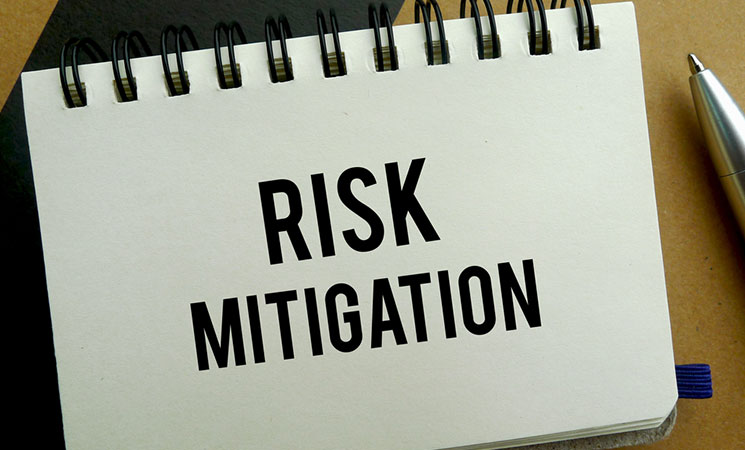To succeed in real estate investment, you should know where and why you invest in a certain property.
However, it comes with risks; if not tackled right, it can cost you your investment. Researching the market risk and considering any operational risks are important to ensure success in this industry. That’s not all; identifying the risks and then analyzing them accordingly are also necessary to bring the game into your hands.
There is more to know! So, without further ado, let’s binge on the blog.
Don’t Have Enough Time? Check The Summary
Multifamily investment comes with advantages, but if you don’t know the risks, you can also face setbacks and losses. As you’re into investments, knowing all the possible risks is a must!
This is why I always recommend that you know your investment’s market risk, operational risk, and debt and financial risks. In this way, you can stay ahead of your investment and plan all your next moves.
Yet, if you need help figuring out the risk management in multifamily investing, you can always seek the assistance of experts.
Identifying Risks In Multifamily Investment
Here are some of the major risks that investors can face during multifamily investment.
Market Risk
Many factors can contribute to this market risk:
- How many rental places are available
- The number of people looking for them
- Changes in interest rates
- How the economy as a whole is doing
This is why, as an investor, you should always be prepared for the possible market risks.
Operational Risk
One of the challenges of multifamily real estate is taking on the operational risks of:
- Managing property
- Working with contractors
- Dealing with tenants
That’s not all; Property management involves many tasks, such as:
- Finding good tenants
- Handling repairs
- Listening to tenants’ needs
Not being able to conduct any of these properly is a possible operational risk in multifamily real estate.
Debt and Financial Risk
You must already be familiar with the financial risk that comes with investing in multifamily properties. Getting financing for your properties often means borrowing money.
However, always ensure you understand “ALL” the terms of your loans, like:
- How much interest do you pay?
- How long it’ll take to pay off?
- Any possible changes in the interest rates
Not being able to follow through with any of these factors can result in debt or even financial crisis or risk.
5 Strategic Approaches To Avoid Risks In Multifamily Business
When it comes to investment, there will always be risks and not planning ahead can make you fall within the risk factors. So, here I’ve listed out my top strategic approach to ensure you don’t make the mistakes I once did.
1. Identifying the Risk
Most of the investors fall into the “trap of losses” because they do not identify risk factors. Real estate management comes with severe risks from the lease signing until the lease termination.
So, what’s the purpose of this risk management stage? The sole purpose of this stage is to point out all the possible risk sources so that you don’t get into losses.
Here is the risk identification checklist that can help you figure out what you should be looking for during this stage:
- Identify whether there are legal issues with your property
- Point out any operational flaws
- Prepare the financial plans before it’s too late
- Have a clear plan of how you want to proceed with your investment goals
2. Responsive Planning
After assessing the risk factors, you, as an investor, need to define a proper and solid plan to minimize any negative impacts during the duration of the lease.
You may wonder, what are the ways to “response planning”? Here’s what you need to do:
- Accept the risk
- Avoid any further risk
- Control the risk
- Transfer the risk
With a combo of these mentioned plans, you can make an effective and point-on risk management strategy.
3. Analysing Risk
Let me clear this, there’s a huge difference between solving a problem and analyzing the state of the problem.
You simply can’t solve a problem if you don’t analyze it first. So, for “analyzing the problem,” you need to figure out:
- How prone your business is to certain risks
- The probability of the assessed risk becoming a reality
Through these risk analyses, you can find out the frequency, livelihood, and risk impacts, letting you know how to prioritize the resources.
During this time, experts recommend using a heat map to visualize the severity and chances of risk.
4. Risk Mitigation
Once a plan is in motion, it’s all about making it happen. With the correct information and tools, the property management team can dodge most risks.
For the ones that stick around, they can dial them down to manageable levels by sharing or lessening them.
Then comes the critical part: checking that the safety nets they’ve set up are doing their job well and can continue doing so.
It’s like making sure your umbrella has no holes before the rain starts pouring—just a little precaution to keep everything running smoothly.
5. Monitoring the Risk
Keeping an eye on risks throughout the leasing journey helps the operators adjust for:
- how likely they can happen
- how much they might affect things over time
The monitoring plan should keep up with changes, like regular check-ins, to ensure the company is ready for any risks before they cause trouble. It’s like staying ahead of the game, so you’re not caught off guard by anything unexpected.
This ongoing watchfulness is super important for firms to stay on top of things. You must spot and handle old and new risks as they pop up, just like tending to a garden to keep it thriving.













